MOTORING
Lexus UX 2.0 F-Sport: When tech meets edge
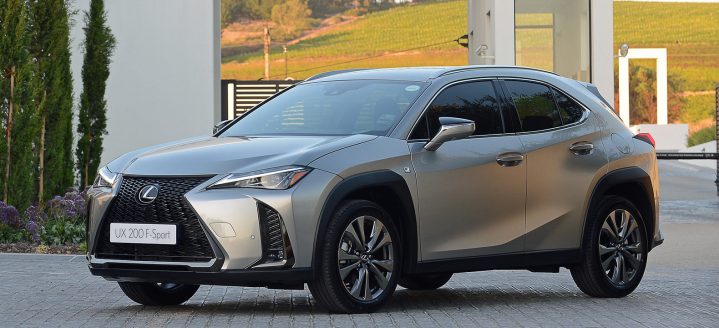
It’s sporty, edgy and a real head-turner. It’s also smaller and more progressive than any other Lexus. But can the Lexus UX attract the younger audience – and the extra sales volumes – the brand is hoping for?
Premium marque Lexus has always needed a more adventurous, more dynamic mainstream model to attract younger buyers. It tried to achieve that objective with the C200h hybrid hatchback some years back, but that car lacked both flair and feistiness.
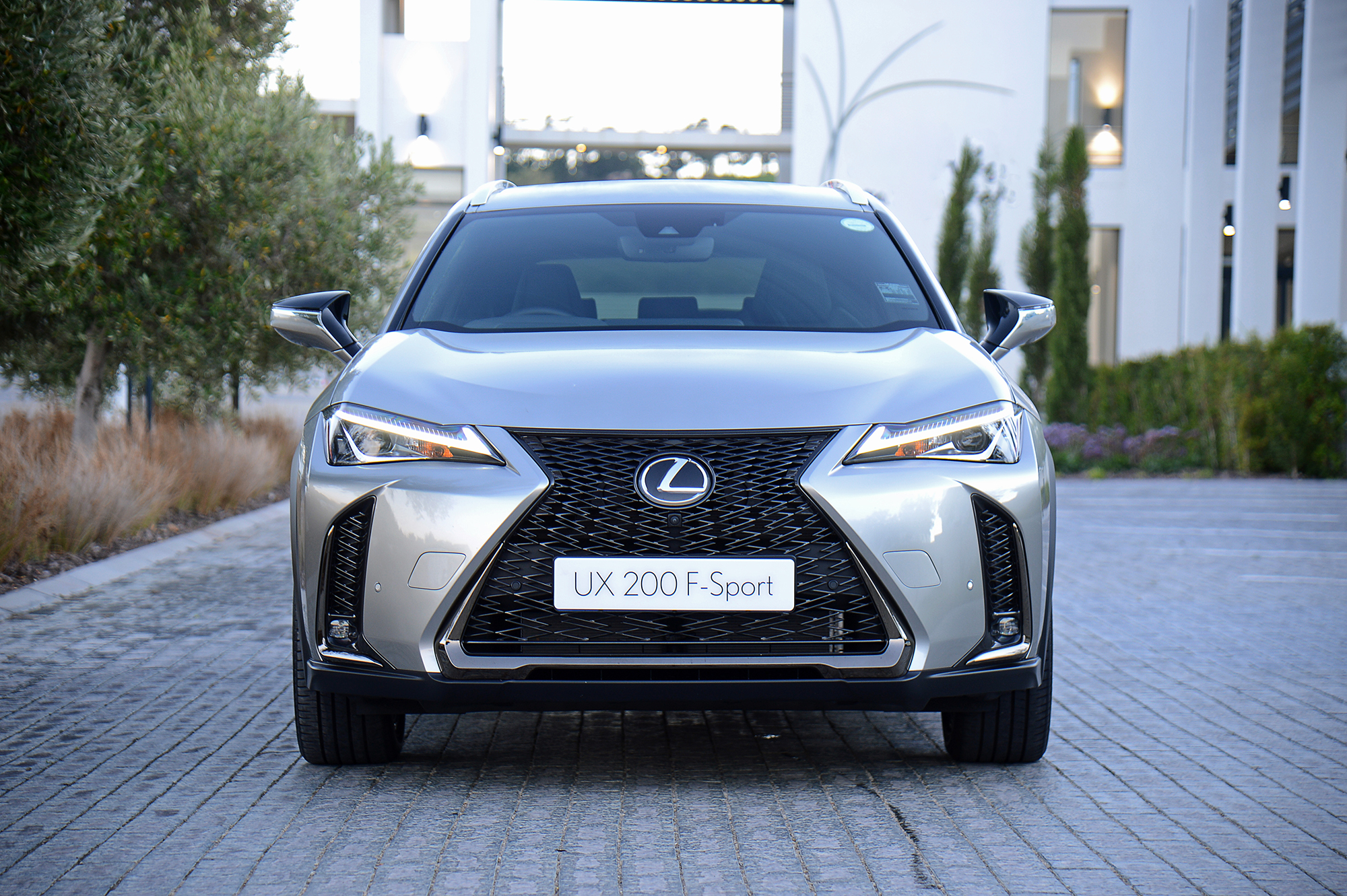
Enter the Lexus UX, a much-hyped small crossover featuring head-turning looks, an extensive mix of hi-tech and luxury features, and the promise of engaging road manners. And since it’s a Lexus, there’s the allure of luxurious appointments, too.
The styling is likely to get the tongues wagging. The oversized front grille – an almost over-the-top interpretation of the brand’s spindle design – ensures that there’s no confusion about the crossover’s identity.
The headlights are narrow slits, endowed with jagged, lightning bolt-style daytime running lights. They reflect the almost disruptive edges, angles and creases that characterise much of the exterior detailing.
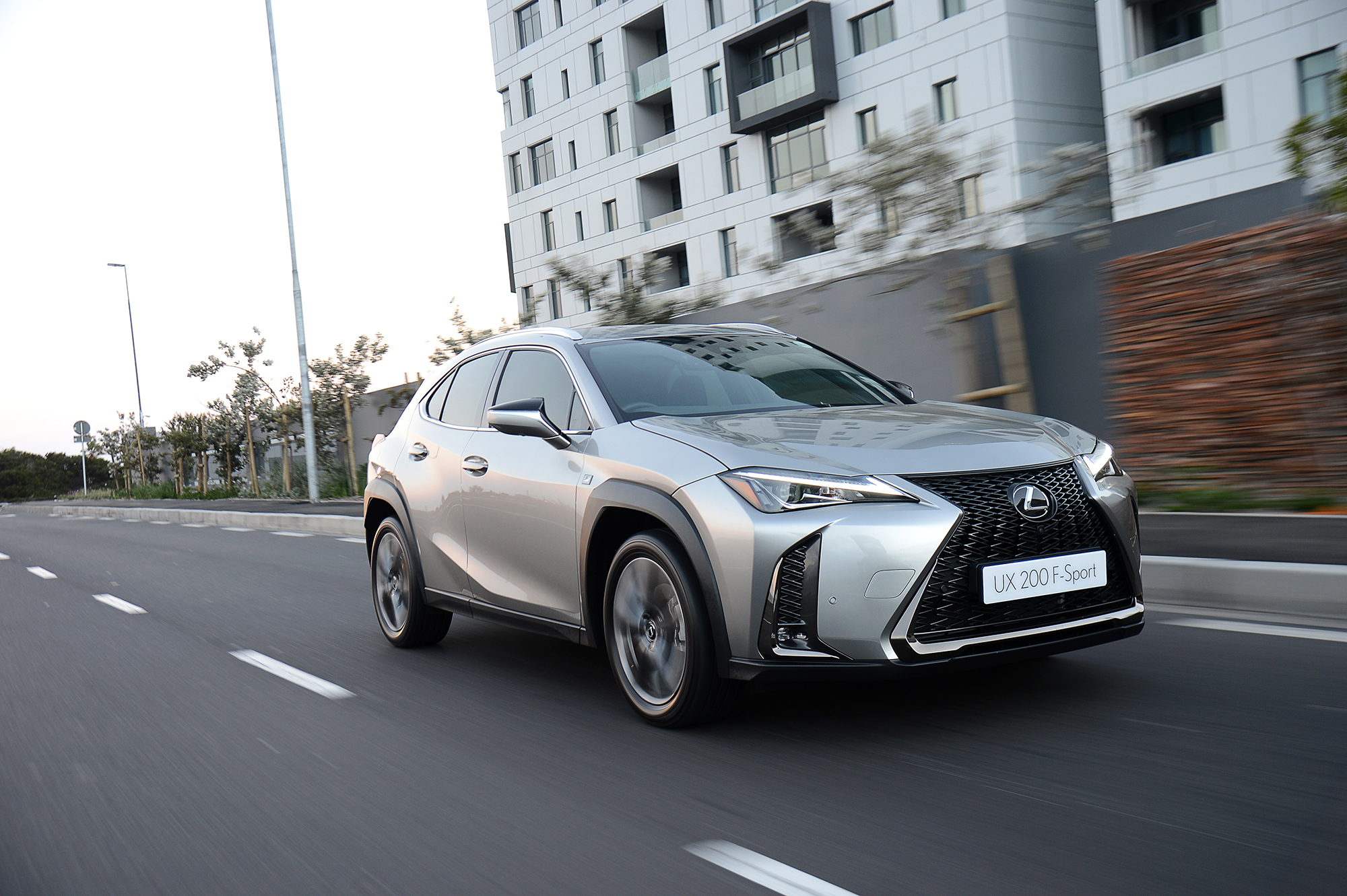
The big wheel arches are accentuated by black protective mouldings in deference to the UX’s crossover positioning, and the flanks are defined by several sharp-edged contours, designed to accentuate the newcomer’s wedged profile.
The rear treatment is even more radical: the one-piece taillight cluster protrudes and extends on either side of the car’s rump, acting like an integrated spoiler. There’s a rooftop spoiler too, and a diffuser with triangular fog lamps.
The result is a fascinating appearance that teases the eye from every angle. The UX isn’t handsome in any conventional sense, nor is it a shape that breeds ambivalence or indifference – and that’s a good thing.
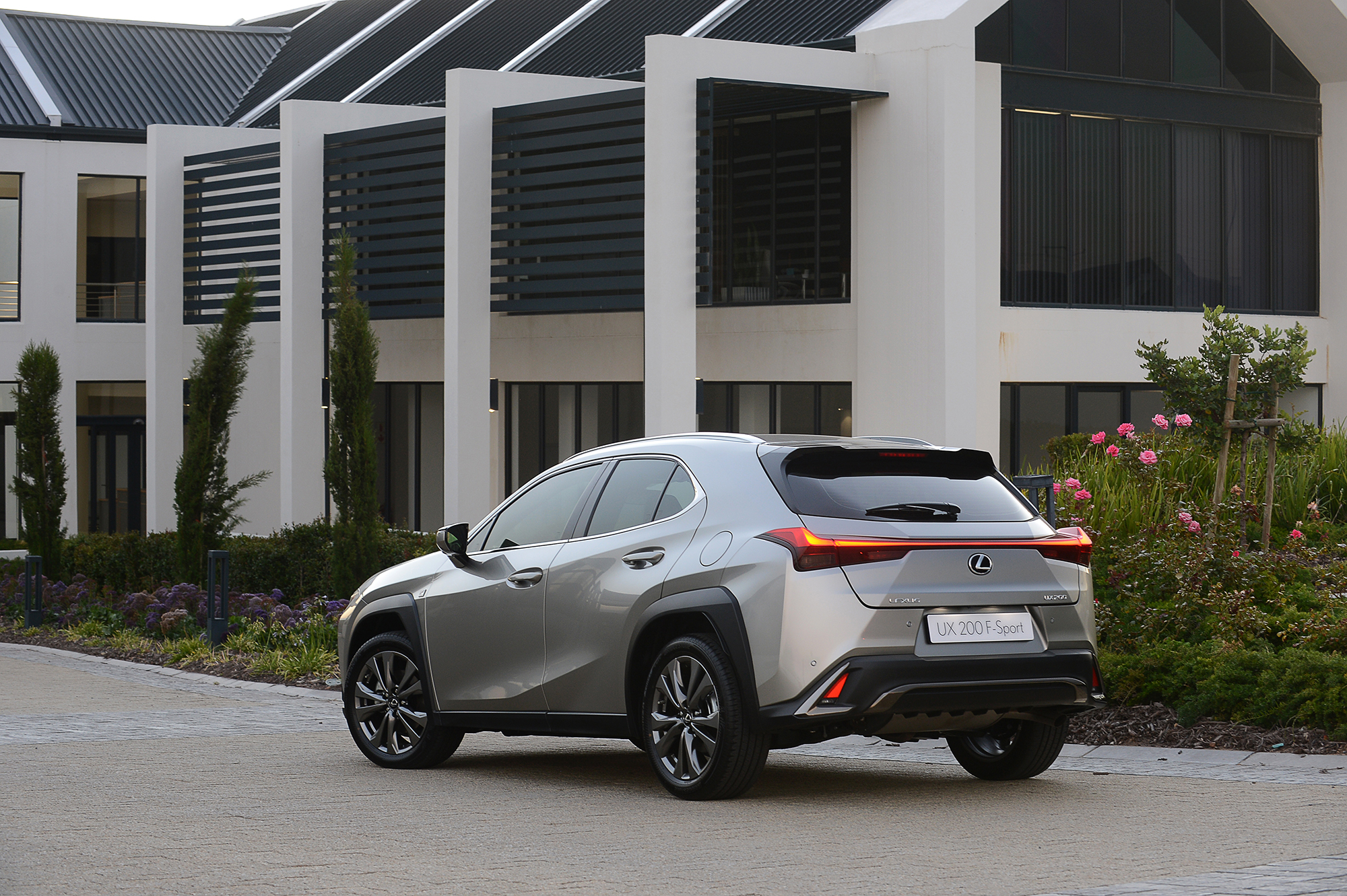
Even those who hate the looks might admire the sheer audacity of the design. That it exudes a certain sportiness despite being billed a crossover will also appeal to its younger target audience.
That sporty demeanour is even more pronounced in the case of the F-Sport version tested here: the meshed black of the grille, dark-hued 18-inch alloys, a deeper front splitter and deeply drawn lateral intakes set it apart from the milder UX models.
The distinctions continue in a cabin that is more car than crossover, and more sports car than luxury hatch in the F-Sport’s case. The front seats are high-backed buckets with pronounced bolsters, a model-specific digital instrument cluster, a thick-rimmed steering wheel and alloy-plated pedals.
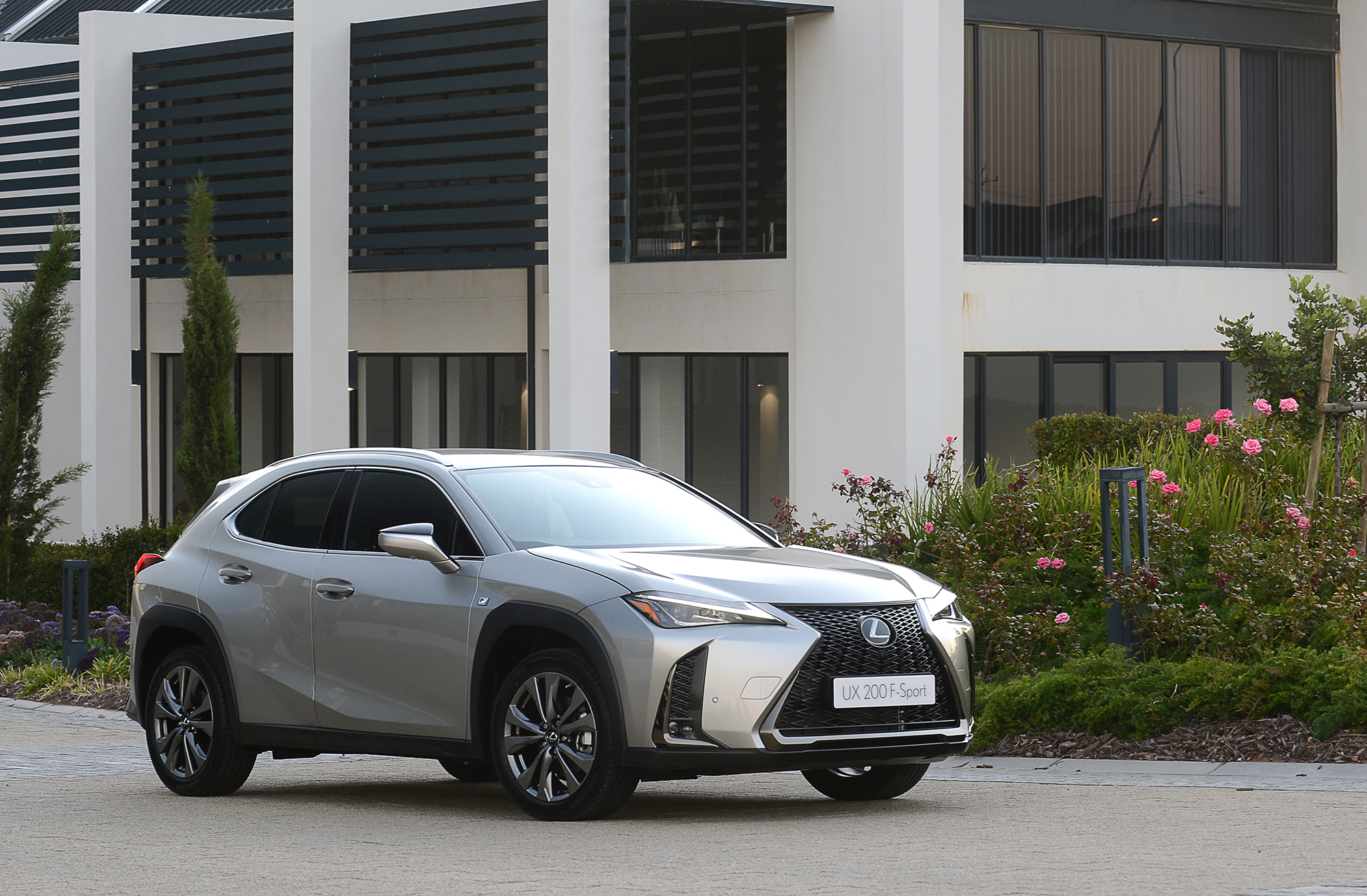
The LED-lit cabin mixes tech-heavy sci-fi with Lexus-style luxury. The materials are plush and varied, and there’s an aura of bespoke luxury that’s unmistakably upper league.
The equipment list is unashamedly premium and very much full house, with highlights including keyless entry and start, satnav, adaptive cruise control, a motorised tailgate, 13-speaker Mark Levinson audio, and a full suite of safety-focused protection and assistance systems.
Dominating the fascia is an expansive, landscape-oriented colour screen above the centre stack, with a menu-based user interface for the infotainment system that’s navigated via a touchpad with haptic feedback and gesture control.
I expected operation to be awkward, but it’s surprisingly effective and intuitive in practice, once you grasp the operating principles. All the more’s the pity that it is the highlight of an otherwise fussy and unnecessarily complicated ergonomic package.

Buttons, controls and stalks are strewn across the dashboard, and the same goes for the multifunction steering wheel. The radio controls are incorporated in a horizontal switchgear pod ahead of the central armrest, where they’re hard to identify and even harder to reach.
At least the digital instruments are unequivocal: a large, round dial shows numeric speed and analogue rev count, flanked by bar graphs for fuel tank level and engine temperature. That dial can be shifted to one side at the push of button to reveal a multi-information display – a nifty touch.
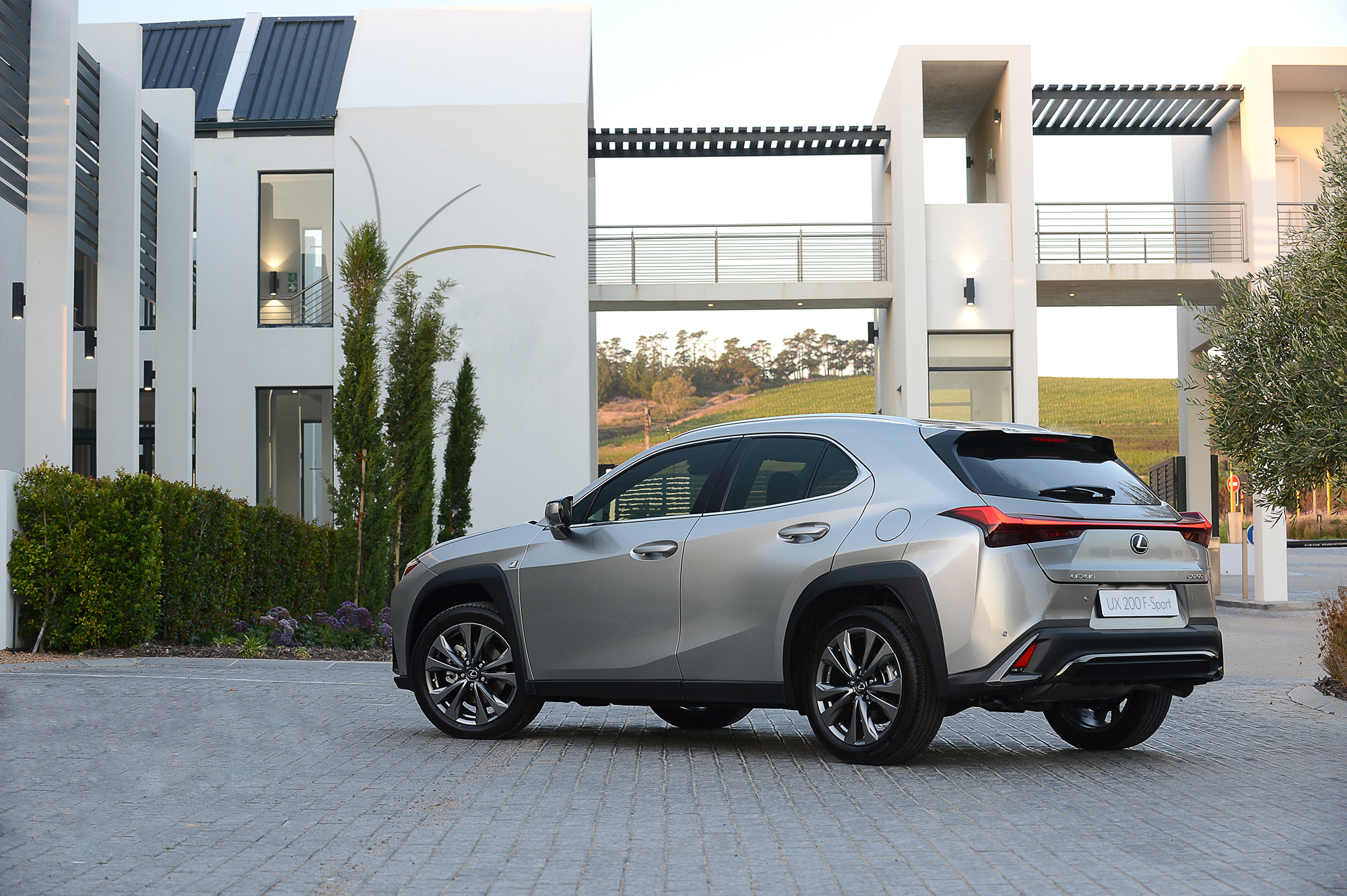
The driving position is excellent, with the electric seat and steering wheel adjustment allowing ample scope to find just the right settings. Ensconced in that bucket seat, you’re not at all aware of the vehicle’s slightly raised 160mm stance.
Rear accommodation is best described as cosy: legroom is okay, but taller folk might find their knees snagging the front seat backrests. And then there’s the boot: a disappointingly shallow affair with a floor that conceals a rounded space underneath usually reserved for the spare wheel.
It’s vacant because the UX is shod with run-flat tyres. But the resulting aperture’s odd, uneven shape means it’s not really suited for conventional luggage. Quoted cargo capacity is a miserly and compromised 272 litres.
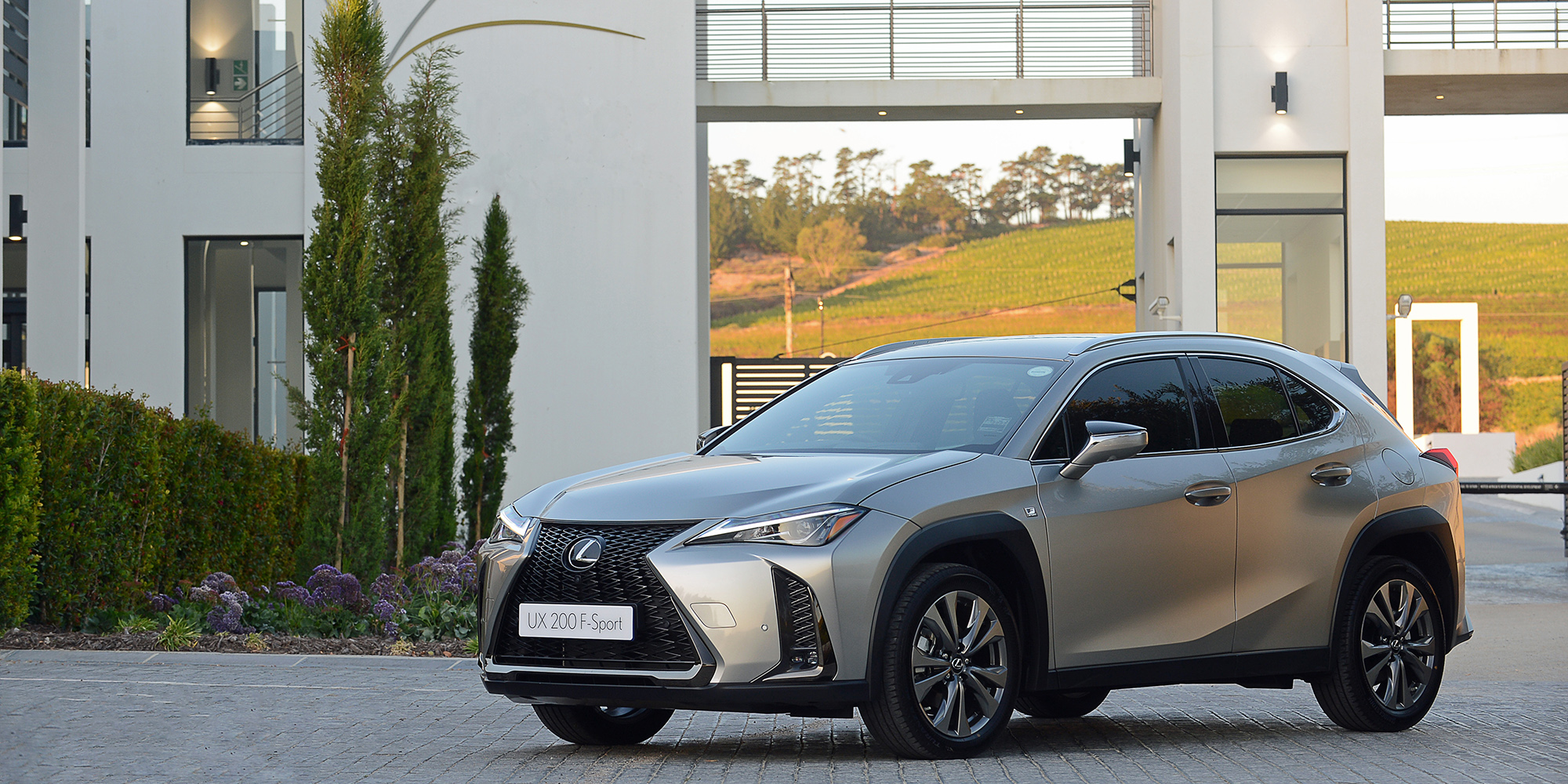
Given that this is the range-topping F-Sport, you’d expect a slightly racier drivetrain. The bonnet hides a two-litre four-cylinder engine promising 126kW of muscle and 205Nm of twist: adequate, if not in the go-faster league.
It’s a willing revver that’s eager to be pushed into the red, and needs to be exercised to make the most of the urge on offer. With the torque maximum only reached at 4,800rpm, the gearbox plays a vital role in keeping the engine on the boil.
Sadly, that gearbox will have sportier types cringing. It’s a Continuously Variable Transmission – or CVT for short. Okay, so this one has some clever tweaks, but when the chips are down, it’s still a drone-prone CVT.
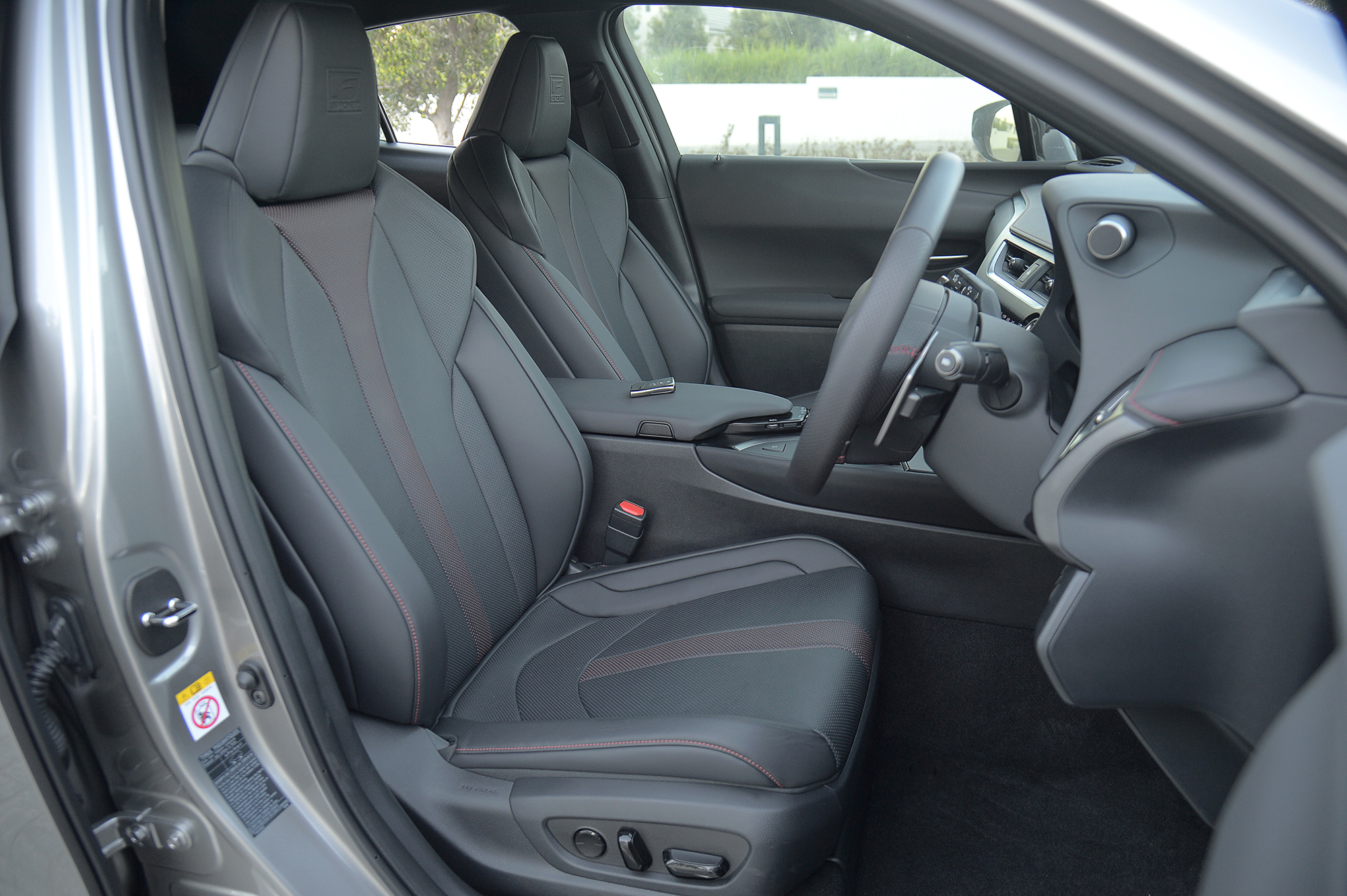
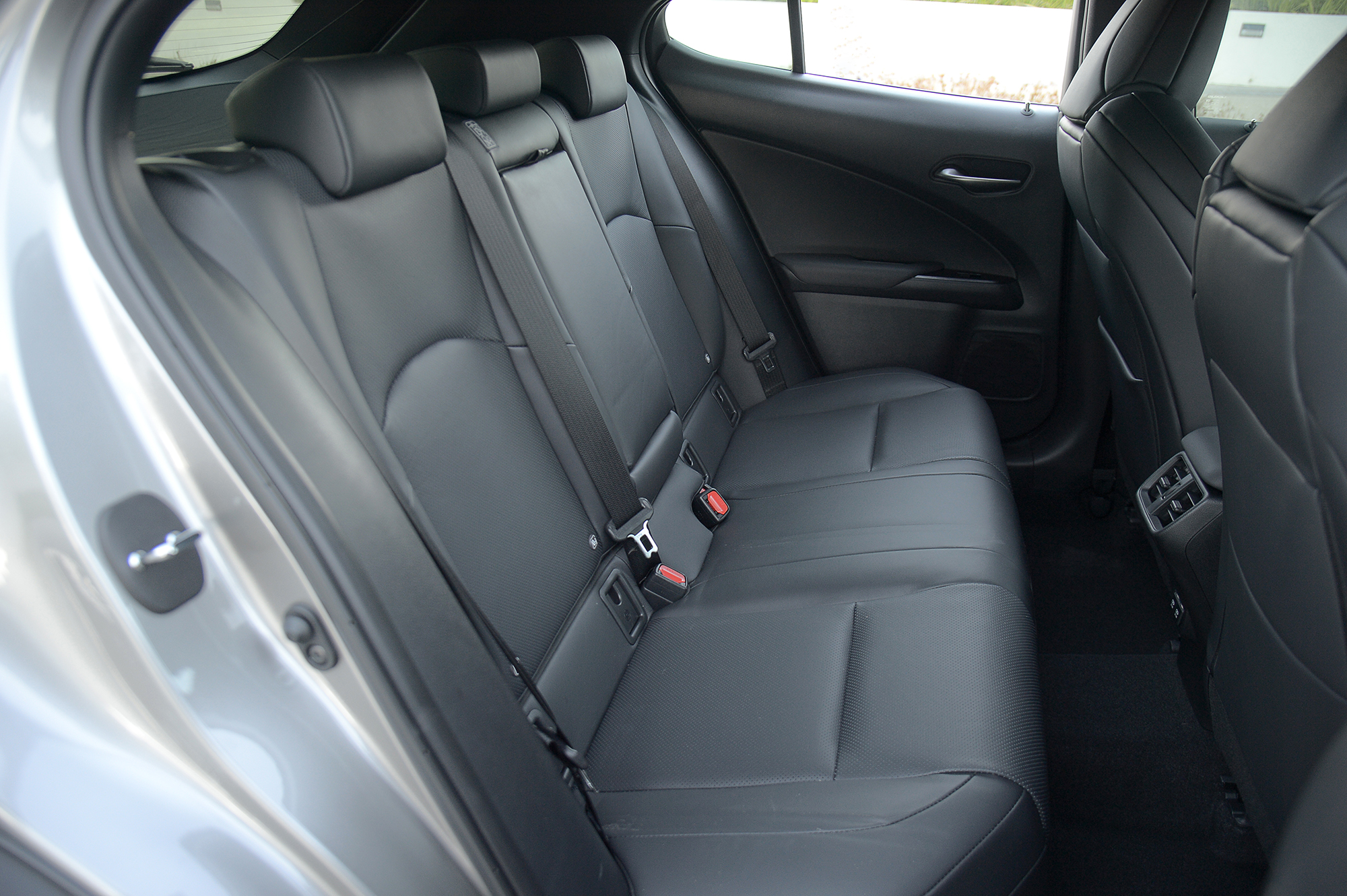
Lexus calls it a Direct Shift CVT or D-CVT, which it claims delivers a more stepped, defined driving experience, thanks to a mechanical gear set that’s used for the initial pull-off from rest, before the pulley-based CVT takes over.
It certainly gets off the mark with intent, and if you switch to manual, you can use the shift paddles to swap between no less than 10 virtual gears. In the default comfort driving mode, those shifts are a little too leisurely though.
You can also opt for Sport or even Sport Plus driving modes, with commensurately more incisive shifts. In Sport Plus, the changes are impressively quick and percussive.
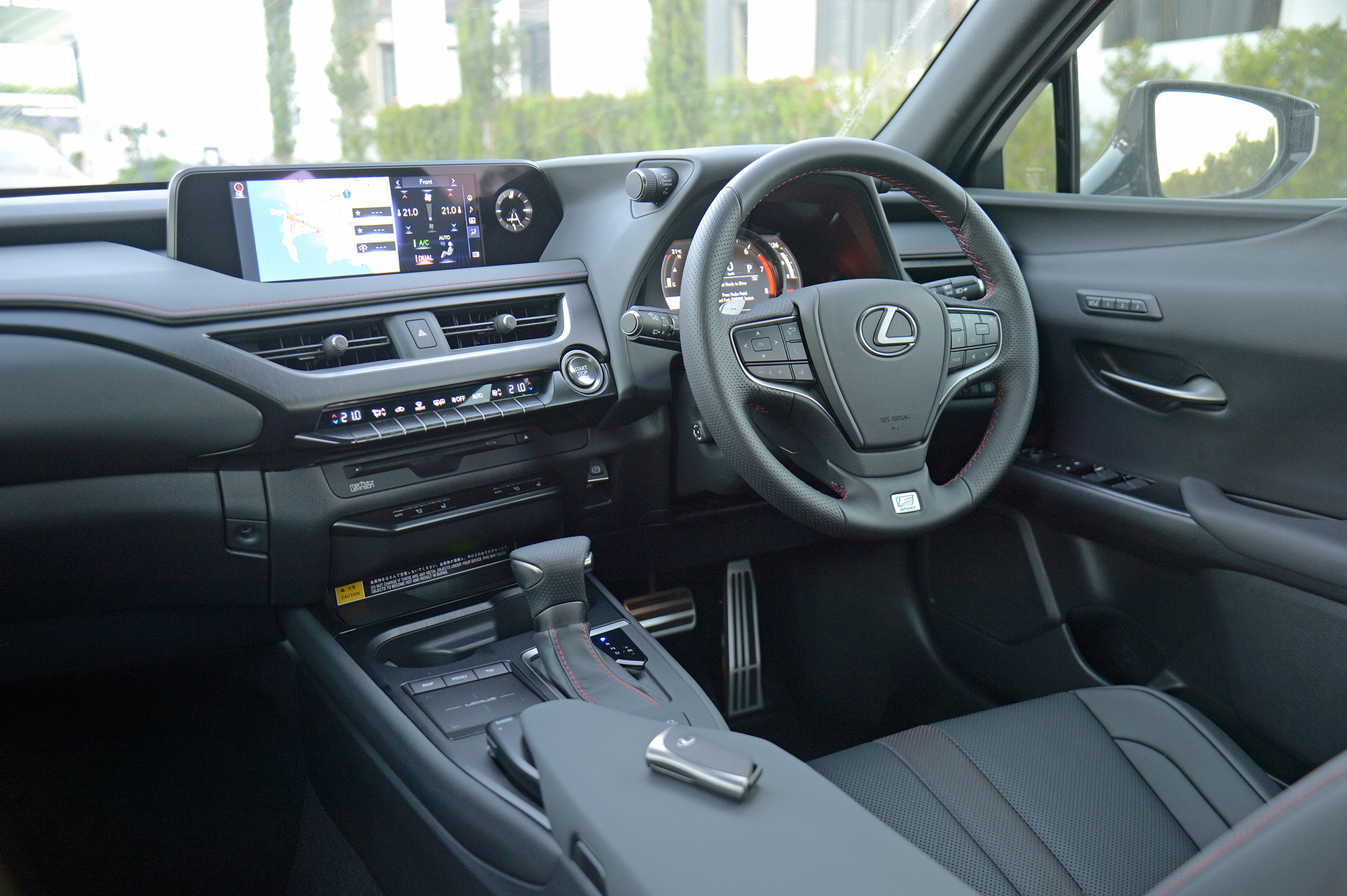
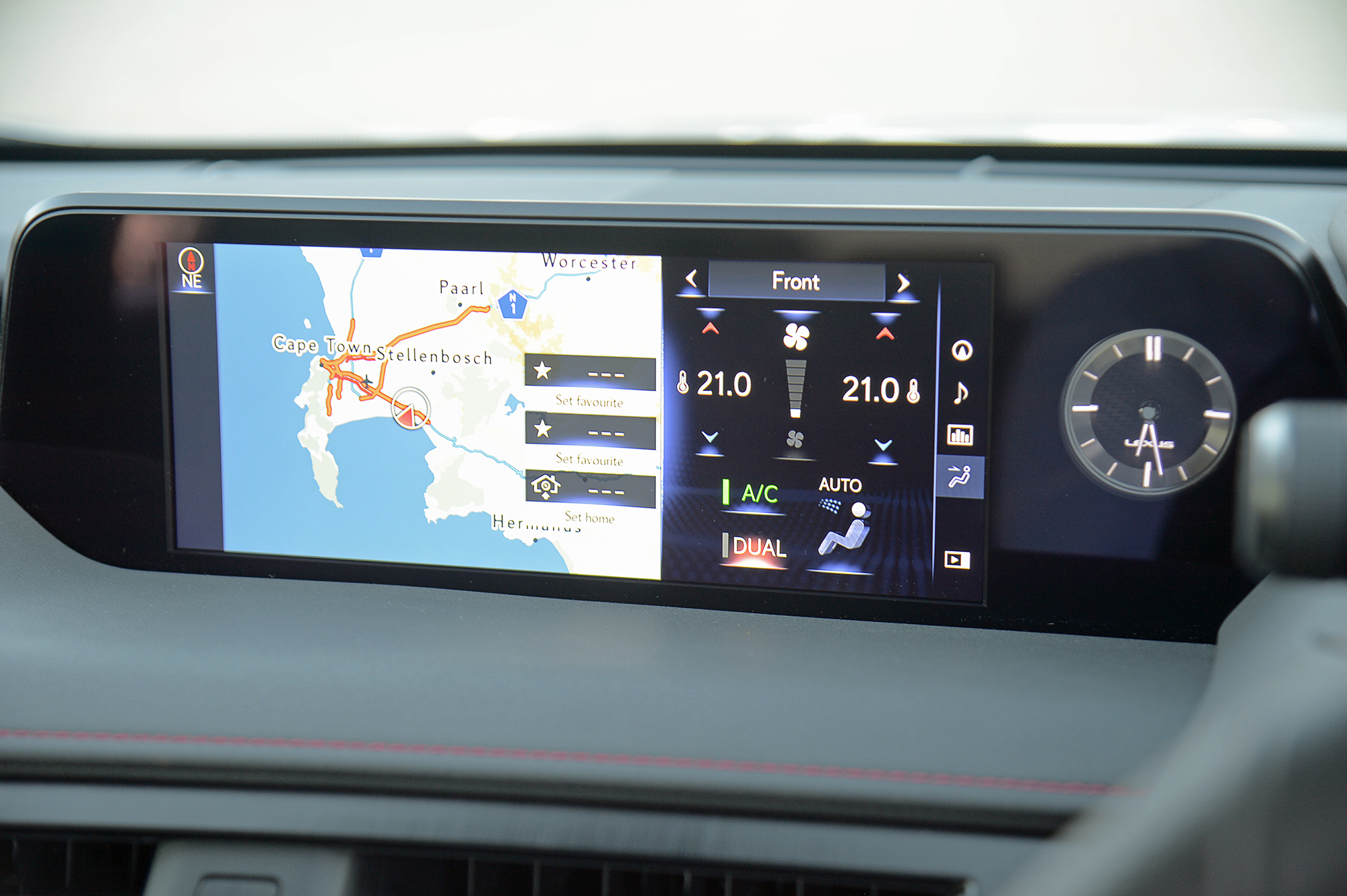
But the bad news is that the drone persists. In any given gear, you’ll still hear the variance in engine speed so easily mistaken for a slipping clutch, and which is usually referred to as the rubber band syndrome.
Yes, we all know that CVTs are efficient. But for a car as overtly sport as the UX F-Sport, a plain old manual gearbox would have been so much more enjoyable and engaging.
While we’re on the subject of driving modes, Sport and Sport Plus also progressively sharpen throttle response, add extra growl to the exhaust note, and stiffen up the variable-damping suspension.
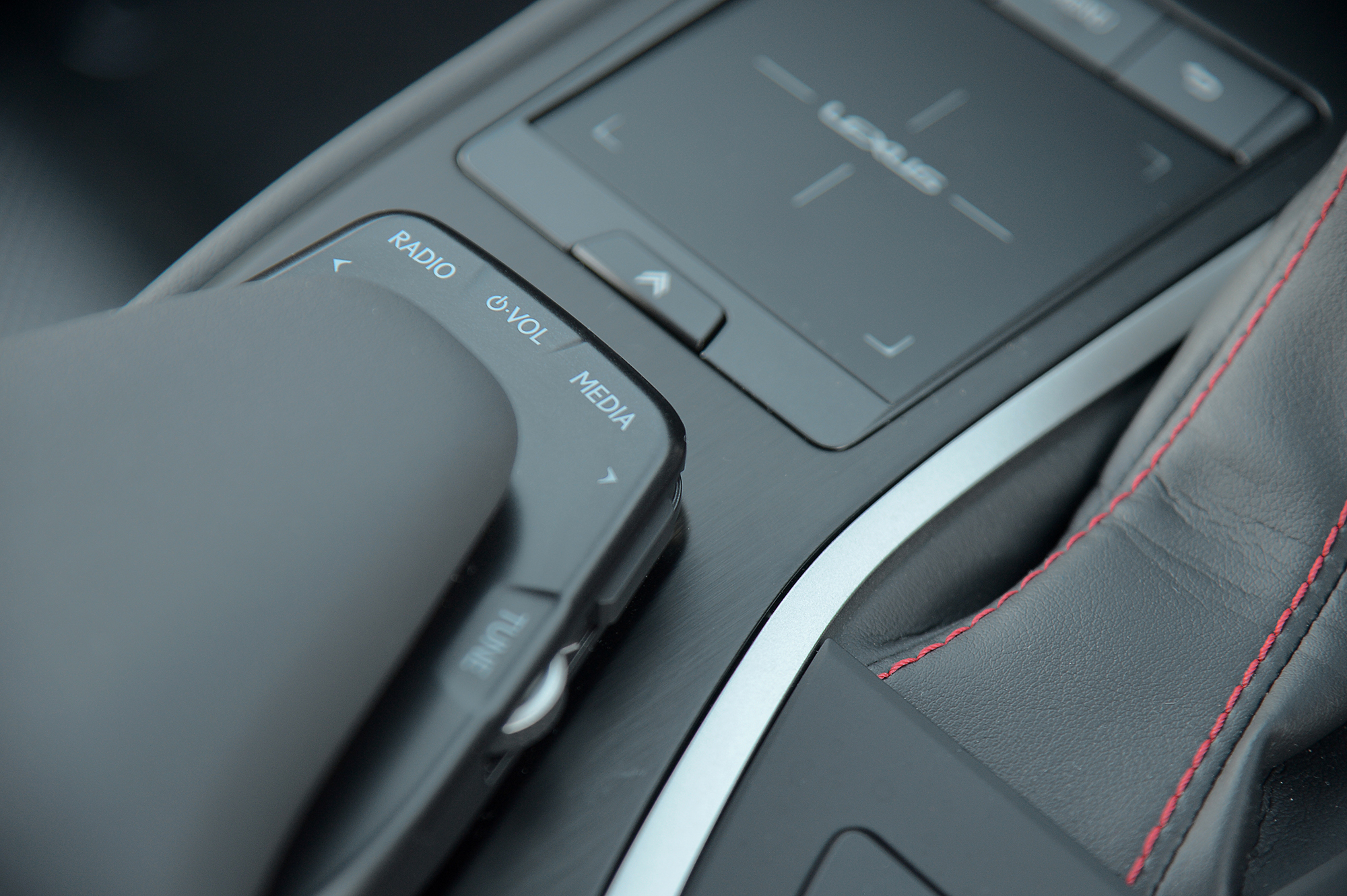
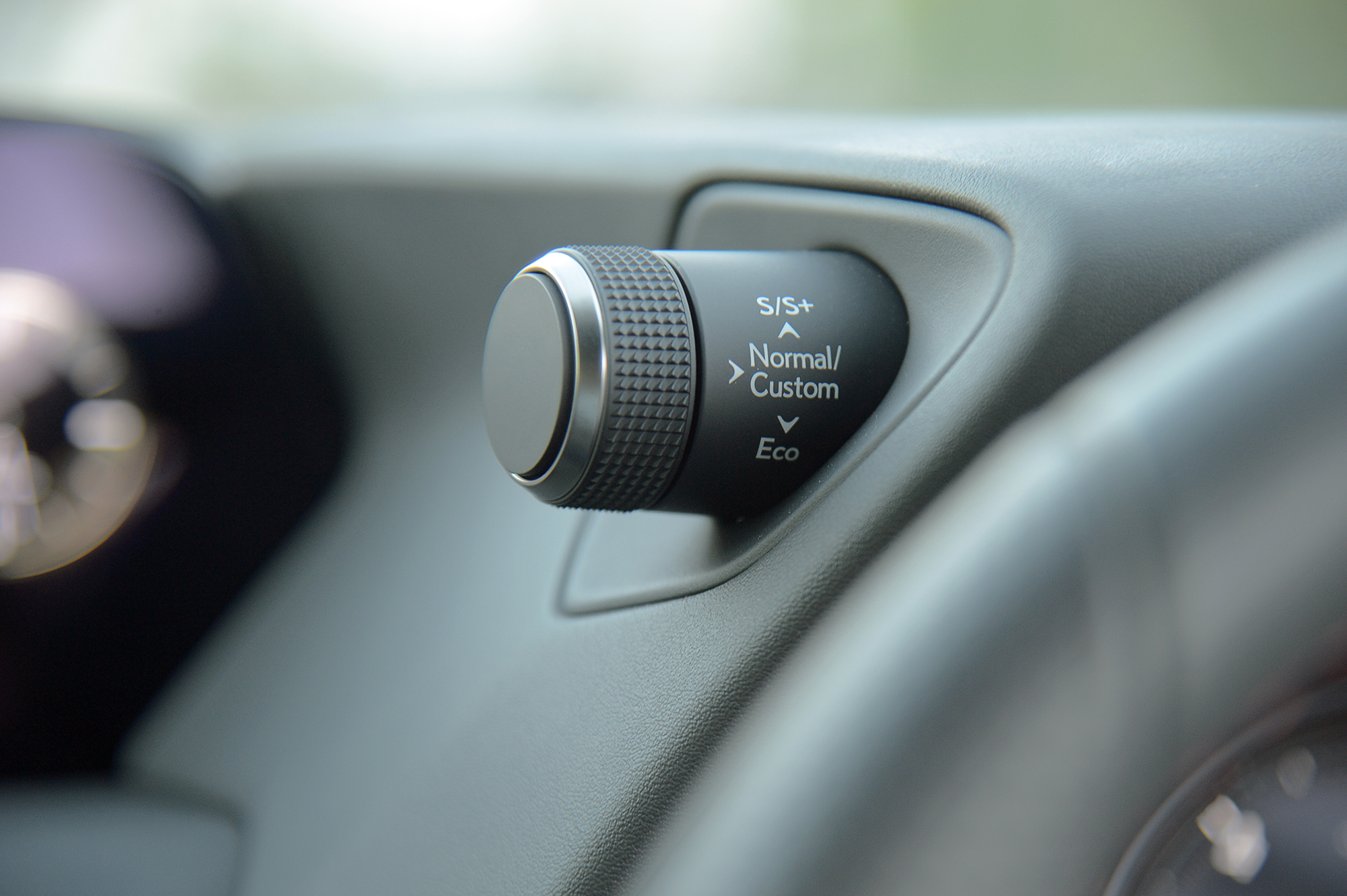
Even that big instrument dial gets a more aggressive colour scheme, and acts as a gearshift indicator as you get close to the redline. These two modes are best suited to the UX F-Sport’s overt personality, and add welcome zest to the overall driving experience.
The UX F-Sport’s stand-out talent, however, is its handling. The car rides on an all-new, ultra-stiff platform with a low centre of gravity, and it shows in road manners that are confident and engaging.
The F-Sport’s suspension has been specifically tuned to provide responsive road manners, while the adaptive damping mentioned earlier ensures a broad range of compliance. The result is a balanced and surefooted ride, with minimal body roll.

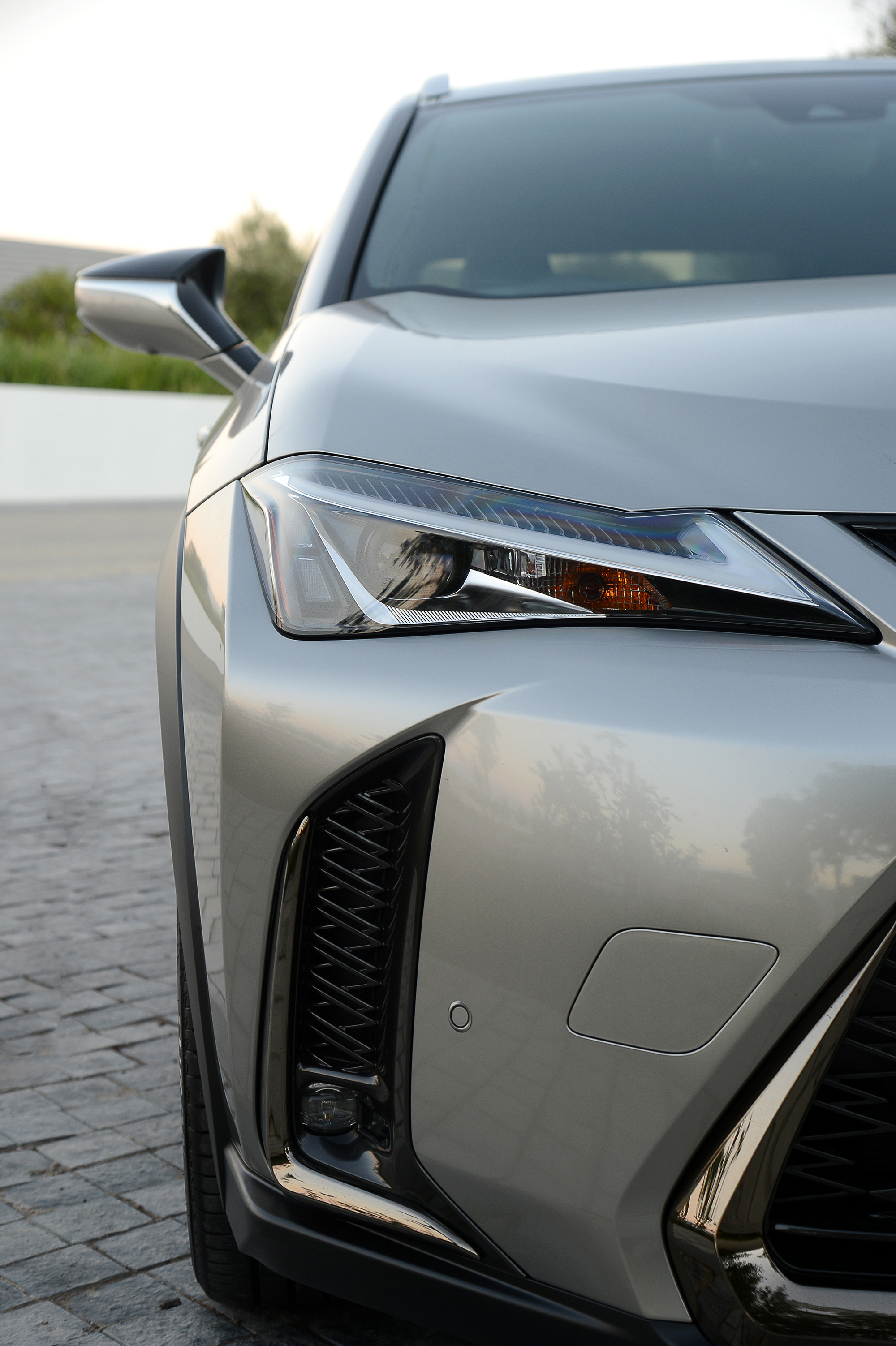
There’s good feedback from the chassis without compromising ride quality, and while the steering could do with more feel, it offers crisp turn-in and loads up nicely when cornering with enthusiasm.
In pure handling terms, the UX is tremendous fun to drive, and it’s obvious that the chassis could cope with much more power. In fact, it cries out for extra urge, and deserves a more incisive gearbox, too.
As it stands, the Lexus UX F-Sport is car of paradoxes. It looks keen and cutting edge, with a strong sense of individuality and cool, contemporary styling attributes.
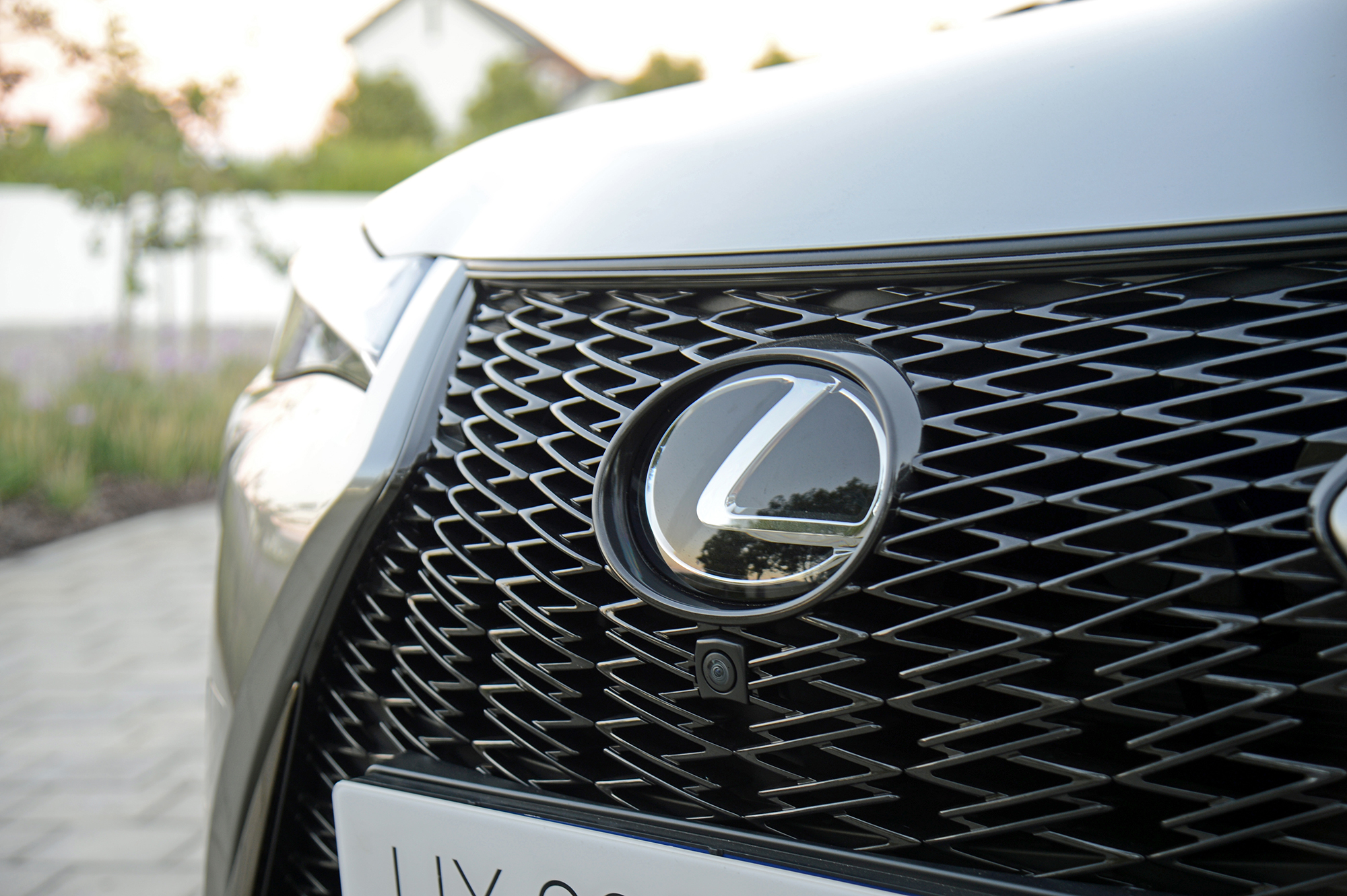
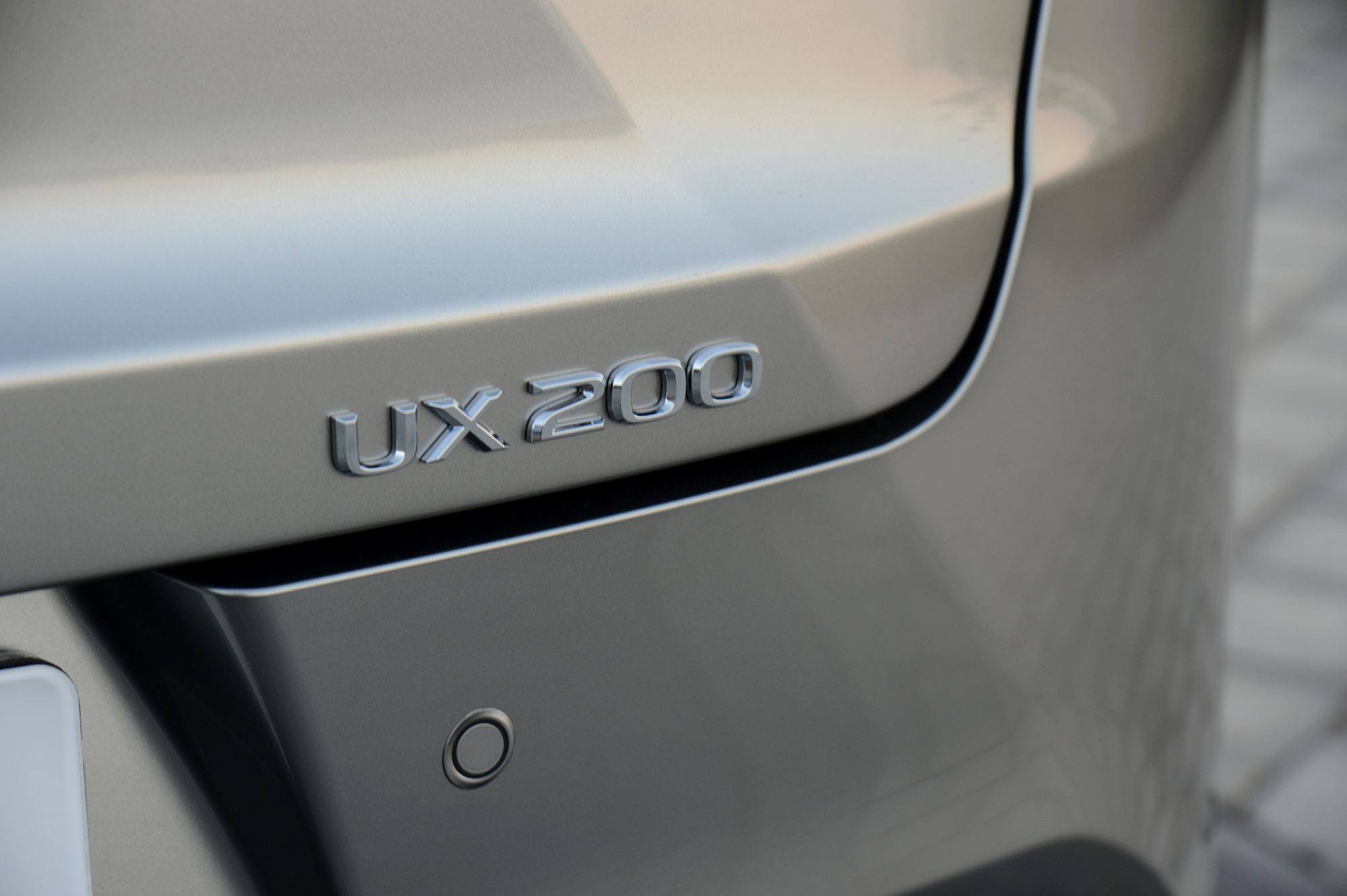
While it’s billed as a crossover, the UX feels more like an upmarket compact hatchback – particularly so in the case of the tauter, zippier F-Sport. Besides, the small boot and limited rear legroom compromise the versatility and practicality usually touted as crossover benefits.
Finally, the UX is meant to open up new sales volume opportunities by attracting a younger, sportier crowd – and that suggests more accessible pricing.
The most affordable UX still costs a hefty R599,000, while there’s a hybrid model for R100k more. The flagship F-Sport tested here commands a R726,200 asking price. That price band pits the UX range against the likes of BMW’s X2 and the Jaguar E-Pace.
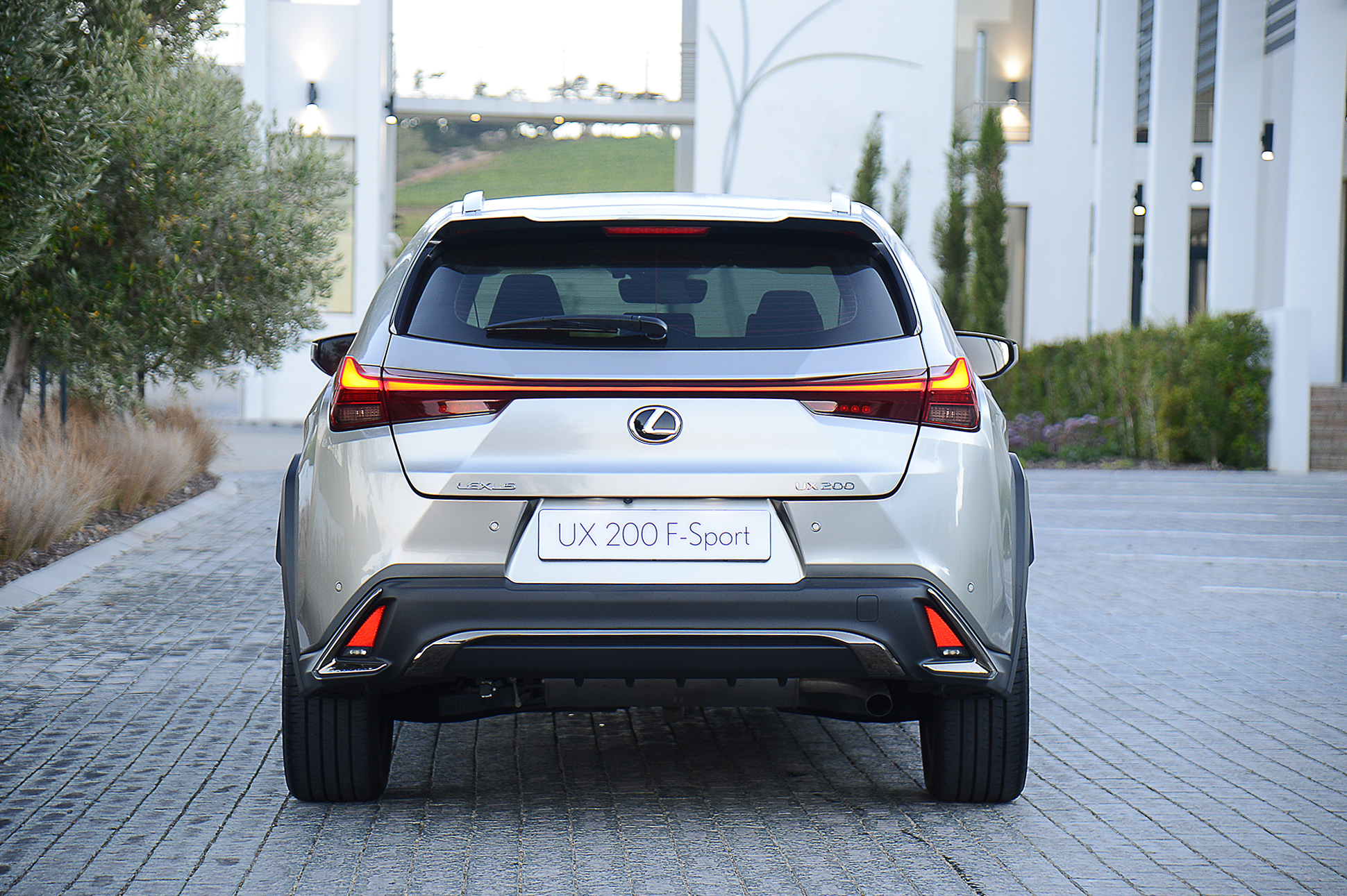
Lexus will argue that the UX is a premium, comprehensively equipped, and innovative product – and that’s true on all fronts. But if it wants to make a real impact in a tough and competitive market, it will need to have the edge on pricing, too. DM
PROS
Eye-teasing looks. A full house of features. High-tech cabin. Great, engaging road manners.
CONS
Pricing needs to be more accessible. That CVT …
VITAL STATS
| Lexus UX 2.0 F-Sport | |
| Engine | In-line four-cylinder, 1,987cc |
| Power | 126kW @ 6,600rpm |
| Torque | 205Nm @ 4,800rpm |
| Power-to-weight ratio | 81.81 kW/ton |
| Gearbox | Direct-shift CVT, FWD |
| Wheels/tyres | 18-inch alloy, 225/50 R18 tyres |
| 0-100 km/h | 9.2sec |
| Top speed | 190km/h |
| Fuel tank capacity | 47 litres |
| Fuel consumption (claimed/tested) | 6.1 / 8.2 litres/100km |
| Operating range (claimed/tested) | 770/ 573km |
| CO2 emissions | 142 g/km |
| Retail price | R726,200 |
| Warranty | 7 years/105,000km |
| Service/maintenance plan | 7-year/105,000km maintenance plan |
















